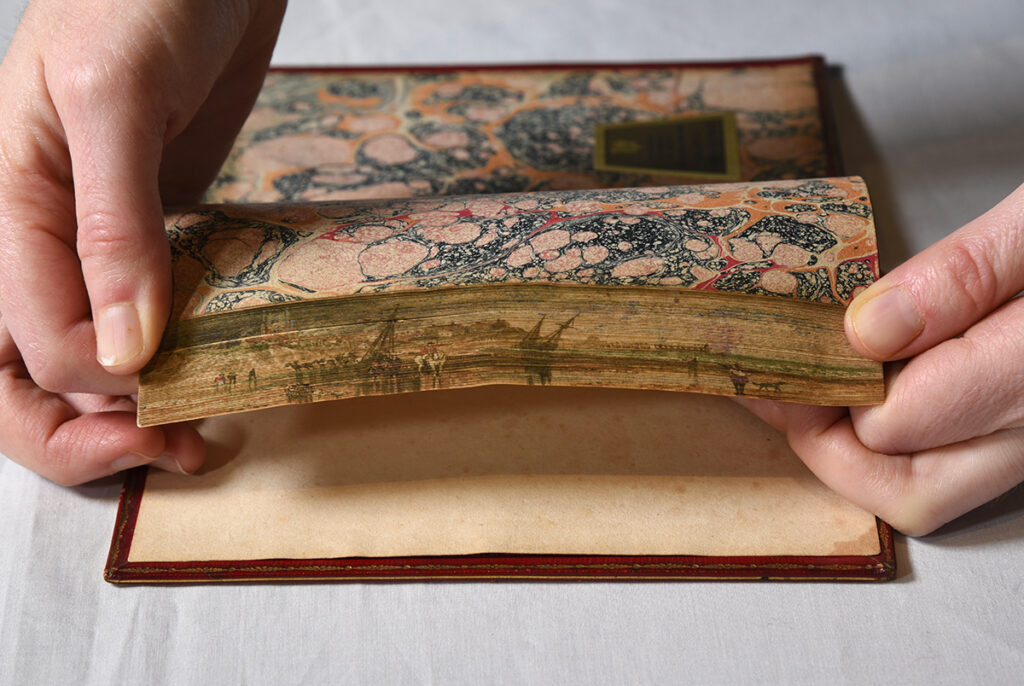
Fore-Edge Paintings
We’ve all heard that you can’t judge a book by its cover, but what about its pages? Today we will explore a very special, but often hidden, feature of some of our more elaborately decorated books: fore-edge paintings.

What are Fore-edge Paintings?
Fore-edge paintings are scenes, portraits, or designs that are painted onto the edge of a book. Although some of these paintings are visible when the book is closed, such as is the case in the photo above, much of the time these paintings are covered over by gilded edges, so that the paintings only become visible when you fan the pages in the manner illustrated below.
Fore-edge Paintings at the Washington University Libraries
The earliest known fore-edge paintings date back to the 1650s, but almost all of the known examples in the Washington University Libraries’ collections are from the early nineteenth or late twentieth century. There are about twenty-one fore-edge paintings in our collections that we know of, but there may be more. Because these paintings are not always obvious at first glance, they are sometimes missed by catalogers.

Hidden from View
Fore-edge paintings are very infrequently displayed to the public, partly because it is impossible to view the paintings without bending and fingering the pages in ways that can be damaging over time. Photos like the ones in this post can sometimes be the best way to allow as many people as possible to enjoy these rare decorations with minimal handling.

Double Fore-edge Paintings
Photographed below is one of the older fore-edges in our collections (published in 1805), which also happens to be a rare example of a double fore-edge painting.


While most fore-edge paintings are only visible if the pages are flipped in one direction, a double fore-edge painting has an image that is made visible when fanned toward the reader, and another image that is made visible when the pages are fanned away from the reader (see images above). Although it is difficult to get precise numbers, it is believed that only about 2-3% of fore-edge paintings are doubles.

Be on the Lookout
A number of the fore-edge paintings we have documented in our collection have been accidentally “discovered” by visitors viewing books with seemingly humble bindings. Although these paintings can be easy to miss when the book is displayed or read normally, tell-tale specks of paint on page edges can alert readers of the presence of a hidden treasure. Next time you come across a book from the seventeenth through early twentieth centuries, keep an eye out for one of these beautiful paintings!


